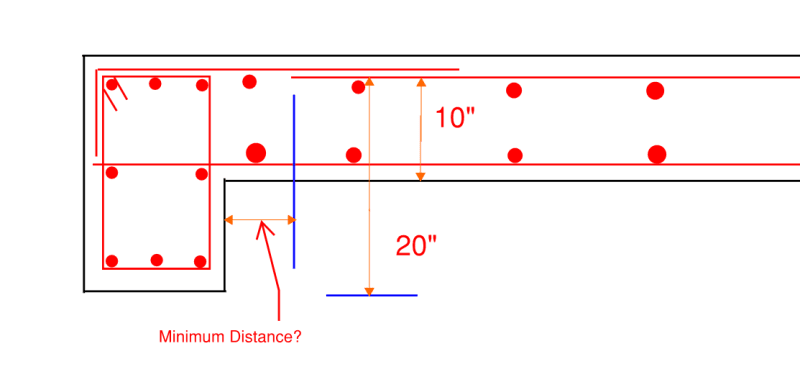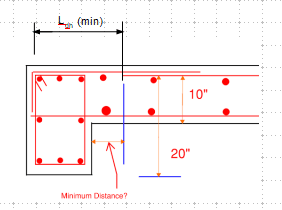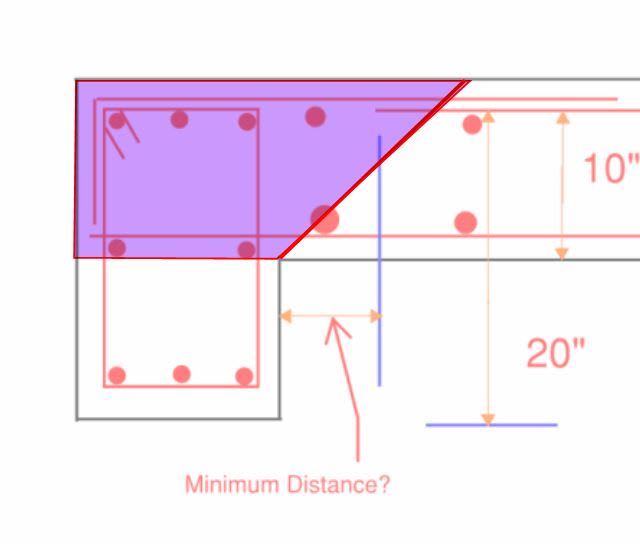Hi Everyone,
When calculating the development length, you have to increase it by 1.3 when there is more than 12" of fresh concrete below the development length or splice. Does this mean directly below, as in taken completely vertical? If there is a local thickening like the one show below, is there a minimum distance that the splice should be located away from the local thickening so that the 1.3 factor does not apply?

Thanks
When calculating the development length, you have to increase it by 1.3 when there is more than 12" of fresh concrete below the development length or splice. Does this mean directly below, as in taken completely vertical? If there is a local thickening like the one show below, is there a minimum distance that the splice should be located away from the local thickening so that the 1.3 factor does not apply?

Thanks


